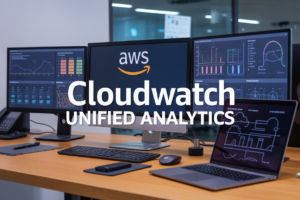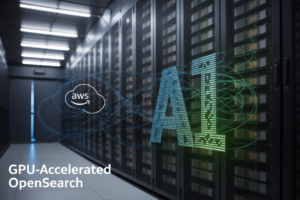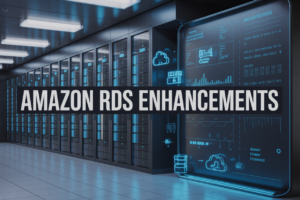You’ve spent hours configuring your custom Linux AMI, and everything works beautifully—until you need to diagnose an issue. Where are the logs? Not in CloudWatch, that’s for sure.
Ever tried debugging a black box? That’s your EC2 instance without proper log streaming to CloudWatch. It’s like trying to fix your car with the hood welded shut.
This guide will show you exactly how to stream EC2 logs to CloudWatch from your custom Linux AMI—no guesswork, no missing pieces.
For years I struggled with this same problem until I developed this systematic approach that works across Amazon Linux, Ubuntu, and other distros.
What most tutorials miss is the critical configuration step that prevents 90% of streaming failures. Let’s fix that.
Understanding EC2 Log Streaming and CloudWatch Integration
A. Why Log Streaming Matters for System Monitoring
Ever tried finding a needle in a haystack? That’s debugging without proper logs. Log streaming gives you real-time visibility into your EC2 instances. When something breaks at 3 AM, you’ll know exactly where to look instead of frantically SSH-ing into multiple servers during a production crisis.
B. Benefits of Using CloudWatch for Log Management
CloudWatch isn’t just another logging tool—it’s your EC2’s best friend. Stop jumping between different dashboards and wrestling with homegrown solutions. CloudWatch centralizes everything, automates alert triggers, and keeps historical data readily available. Plus, it scales with your infrastructure without you lifting a finger.
C. Key Components of the EC2-CloudWatch Pipeline
The magic happens in three parts: the CloudWatch agent (your data collector), log streams (your organized data channels), and log groups (your filing cabinets). This trio works together seamlessly to transform scattered log files into actionable insights. The agent does the heavy lifting while you focus on what matters.
D. Limitations and Considerations
CloudWatch isn’t perfect. Watch out for costs that can spiral when streaming high-volume logs. There’s also a 5-15 minute delay between events and their appearance in CloudWatch. And remember those quota limits—they’ll bite you if you’re not careful with your configuration settings.
Setting Up Prerequisites for CloudWatch Log Streaming
A. Required IAM Permissions and Roles
Before streaming EC2 logs to CloudWatch, you need proper IAM roles. Create a role with the “CloudWatchAgentServerPolicy” managed policy, then attach it to your EC2 instances. This gives your instances permission to send logs without requiring access keys.
Configuring the CloudWatch Agent for Custom Linux AMIs
A. Creating an Effective Agent Configuration File
Ever tried configuring CloudWatch on a custom Linux AMI only to get lost in the settings jungle? Been there. The secret is a well-structured JSON config file that specifies exactly what you want monitored. Keep it simple – focus on logs, metrics, and agent settings in separate sections for easier maintenance.
Implementing Advanced Log Streaming Features
A. Setting Up Real-Time Metrics from Logs
Want instant visibility into your EC2 instances? Real-time metrics from logs are your best friend. Simply configure metric filters in CloudWatch to extract numerical data patterns from your logs. These metrics instantly appear in CloudWatch dashboards, enabling rapid detection of performance issues or security threats before they escalate into major problems.
Automating CloudWatch Log Integration
Automating CloudWatch Log Integration
A. Using User Data Scripts for Agent Installation
Want to save time? User Data scripts are your best friend. Pop your CloudWatch agent installation commands into EC2’s User Data field, and they’ll run automatically at instance launch. No more manual setup each time you spin up a new server.
Monitoring and Troubleshooting Your Log Streams
Verifying Successful Log Delivery
Got logs but not sure they’re making it to CloudWatch? Check your metrics dashboard for incoming log events or jump into the CloudWatch console and verify timestamps match your server time. Still nothing? Time to peek at the agent logs – they’ll spill the beans on what’s really happening.
Common CloudWatch Agent Issues and Solutions
CloudWatch agent acting up? First, make sure it’s actually running with systemctl status amazon-cloudwatch-agent. Configuration errors are usually the culprit – double-check your JSON formatting and file paths. Permission issues trip up plenty of folks too. Give the agent the access it needs to your log files.
Debugging Connection Problems
Connection issues can drive you nuts. Check your VPC settings – does your instance have internet access or a VPC endpoint? Verify security groups and network ACLs aren’t blocking outbound traffic. The agent needs to talk to CloudWatch endpoints, so make sure nothing’s standing in its way.
Handling Log Delivery Delays
Seeing delays? That’s normal – CloudWatch isn’t real-time. The agent batches logs to optimize delivery, typically sending them every 5-10 seconds. Adjust the force_flush_interval in your config if you need faster delivery. During heavy log generation, you might need to increase your agent’s resources.
Leveraging CloudWatch Logs for Insights
A. Creating Useful CloudWatch Dashboards
CloudWatch dashboards aren’t just pretty charts – they’re your EC2 command center. Drag your most critical log metrics onto a custom dashboard for at-a-glance system health. Group related metrics together and add annotations to mark deployments or incidents. Your future self will thank you when troubleshooting.
Effectively managing and monitoring your EC2 instances is critical for maintaining robust cloud infrastructure, and CloudWatch log streaming provides the visibility needed to achieve this goal. By following the steps outlined in this guide—from setting up prerequisites to configuring the CloudWatch agent on your custom Linux AMIs—you can create a comprehensive logging system that captures valuable operational data from your EC2 instances.
Don’t stop at basic implementation. Take advantage of advanced features like log filtering, metric extraction, and automated integration to maximize the value of your logs. With proper monitoring and troubleshooting practices in place, you’ll be able to quickly identify and resolve issues while leveraging CloudWatch Logs for deeper insights into your application performance and system health. Start implementing these practices today to transform your logs from static records into dynamic tools for operational excellence.




















